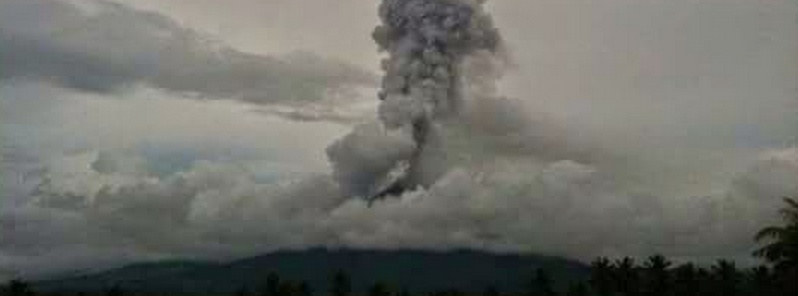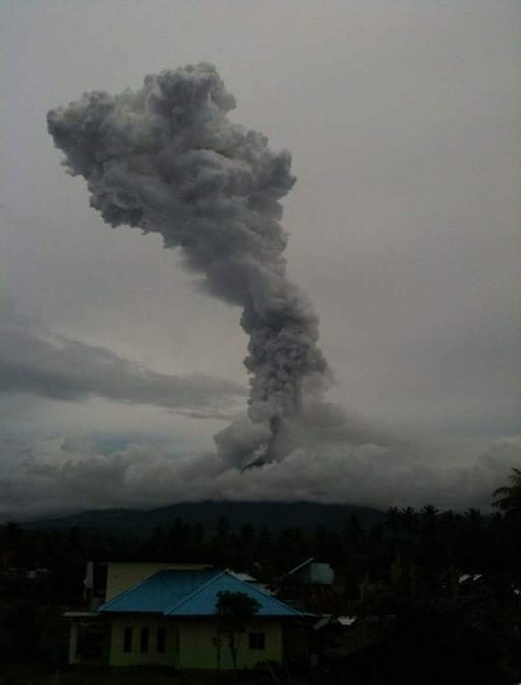New eruption of Mount Soputan, Indonesia

Indonesian Mount Soputan erupted at 03:38 UTC (11:38 local time) on January 18, 2015 producing ash plume which rose up to 5.5 km and drifted SW. Darwin VAAC raised the aviation color code to Red.
Satupo Purwo Nugroho, Head of Data Information and Public Relations for BNPB, said incandescent material was observed rising approximately 500 meters from the top of the volcano. Lava flow was observed traveling about 500 m toward the SW.
Today's eruption was preceded by a significant increase in seismicity which started on January 14.
This volcano last erupted at 18:47 UTC on January 5, 2015 (02:47 local time on January 6) when a thick gray-black column of ash reached an estimated height of 6.5 km above the summit of the volcano and drifted ESE (~8.2 km a.s.l.). Lava flow was observed traveling approximately 2 km WSW.
Alert status for the volcano remains on Standby (3 out of 4). Villagers are banned to enter areas within a 6.5-kilometer radius from the crater.

Mount Soputan eruption on January 18, 2015. Image credit: PVMBG-CVGHM
Soputan was mostly quiet during 2013 and 2014. Its last eruptive episode started on August 8, 2012 and ended on September 19, 2012 (VEI 3). On August 27, 2012, Darwin VAAC reported ash plume rose to an altitude of 12.1 km a.s.l. and drifted 150 km W.
Geologic summary
The small Soputan stratovolcano on the southern rim of the Quaternary Tondano caldera on the northern arm of Sulawesi Island is one of Sulawesi's most active volcanoes. The youthful, largely unvegetated volcano rises to 1784 m and is located SW of Sempu volcano.
It was constructed at the southern end of a SSW-NNE trending line of vents. During historical time the locus of eruptions has included both the summit crater and Aeseput, a prominent NE-flank vent that formed in 1906 and was the source of intermittent major lava flows until 1924. (GVP)
Featured image: Mount Soputan eruption on January 18, 2015. Image credit: PVMBG-CVGHM

With all of the Aluminum Nano-Particalized Aerosol being sprayed by planes daily into the earth’s atmosphere that reflects the sun’s rays back to the sun & forces the heat that wishes to escape from the earth to be trapped and returned to earth to make all life suffer, starve & die……or blow up when a fiery volcano’s eruption is the spark that finally ignites all of the methane gas tbat is dangerously building up from the ocean’s beds………
I wonder if and when another Krakatoa will occur in this area. We could then study just what effect an eruption on the scale of the Krakatoa event would have on the climate.